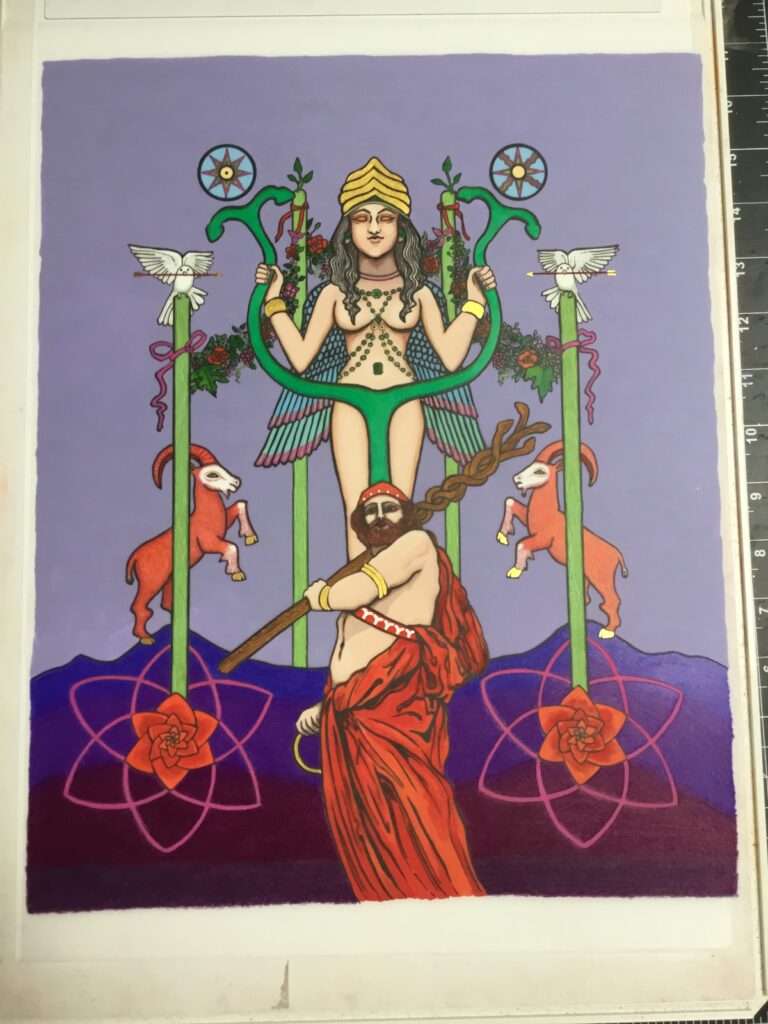
Today the Sun entered the third decan of Aries, in tarot the Four of Wands, known as the Lord of Completion, shown above as the original artwork from the Telos Tarot of 777. The magical description of the decan in 777 reads: A restless man in scarlet robes, with golden bracelets on his hands and arms.
The restlessness and scarlet robes are clearly characteristics of Aries and Mars, while the golden bracelets seem more associated with the Venus and Jupiter aspects of the card. Venus is the ruler of this decan of Aries, and Jupiter is associated with the card as it is a Four. Jupiter corresponds to the Fours, through Chesed on the Tree of Life. The Hebrew word Chesed means ‘kindness or love between people’ as well as love and mercy in a devotional sense, and has connotations of ardor and desire. Jupiter also rules the decan in the triplicity system; we see his influence here as well.
In India, golden bracelets known as “kangan” or “kada” were part of wedding rituals, symbolic of the unbreakable bond between husband and wife. This card with the connection between Venus and Mars, and Jupiter symbolizing law, has associations with weddings, the ceremony between beings who complete each other and join into a legal unit. The four staffs behind the female figure are draped with a wedding garland, and two have the doves of Aphrodite/Venus, holding the arrows of her son Eros, born from her union with Ares/Mars.
The Picatrix description is similar:
“A restless man, holding in his hands a gold bracelet, wearing red clothing, who wishes to do good, but is not able to do it.” It gives the significations as “subtlety, subtle mastery, new things, instruments and similar things.”
Here also is the image Agrippa gives:
“A white man, pale, with reddish hair, and clothed with a red garment, who carrying on the one hand a golden Bracelet, and holding forth a wooden staff, is restless, and like one in wrath, because he cannot perform that good he would.” The significations there are “wit, meekness, joy and beauty.”
Then there are all the various other images:
| Giordano Bruno image (De Umbris Idearum) | A man with reddish hair, wearing ruddy clothing; with a bridle in his left hand, wearing a bracelet and carrying a hardwood walking staff in his right hand. Restless and wrathful, his face shows a longing for wealth which he can neither obtain nor hang on to. |
| Varahamihira Vedic image (Brihat Jataka) | A yellow complexioned man, festooned in cruelty, with artistic skill, a workaholic, unscrupulous, with an irate temperament, with lifted-up stick, clad in purple clothes. This is an armed decanate and human. |
| Raphael image and significations | The third face of Aries, ascends a young woman sitting on a stool, and playing on a lute. Subtlety in every work, and of meekness, of play, mirth and beauty |
| Ibn Ezra image (The Beginning of Wisdom) | A yellow man whose hair is reddish, and he is irascible and contentious, and in his hand are bracelets of wood and a wand, and his clothes are red, and he is a blacksmith, and he desires to do good but he cannot. |
| Liber Hermetis | It is like a woman erect, adorned with linen tied with gold strings tinted a dark rose color. She has a royal gold [crown] on her head. In the middle of her belly there are belly emeralds. She is holding a four headed serpent on the top of a staff. The two heads in the middle are to one side and the [other] two are to the opposite side. This rules the climate of the Lydians. |
You can see that I incorporated the staff from Agrippa’s description, and added the female figure and all her accoutrements from the Liber Hermetis text. I wanted both a male and a female figure, as this decan is the very male sign of Aries combined with the very female decan ruler Venus.
As in the Liber Hermetis description, she is standing erect, adorned with the rose gold strings of emeralds, the belly emerald, and the golden crown, and the very intricately specifically described four-fold serpent staff.
She is clearly an Inanna or Ishtar figure, a goddess who is at once like both Aphrodite and Ares. All her jewelry and his bracelets are painted in metallic gold.
Austin Coppock’s 36 Faces chose as a symbol for this decan, “the burning rose,” which is also a combination of Aries (burning) and Venus (rose).
The Ptolemaic Egyptian deity listed in 777 is Horus, who is fiery, fierce, and martial (Mars) and solar (Sun exalted in Aries.)
The deity from the 36 Airs of the Zodiac fragment is Eros, the child of Aphrodite (Venus) and her lover Ares (Mars), appropriate as Mars rules the sign of the card (Aries) and Venus rules this decan.
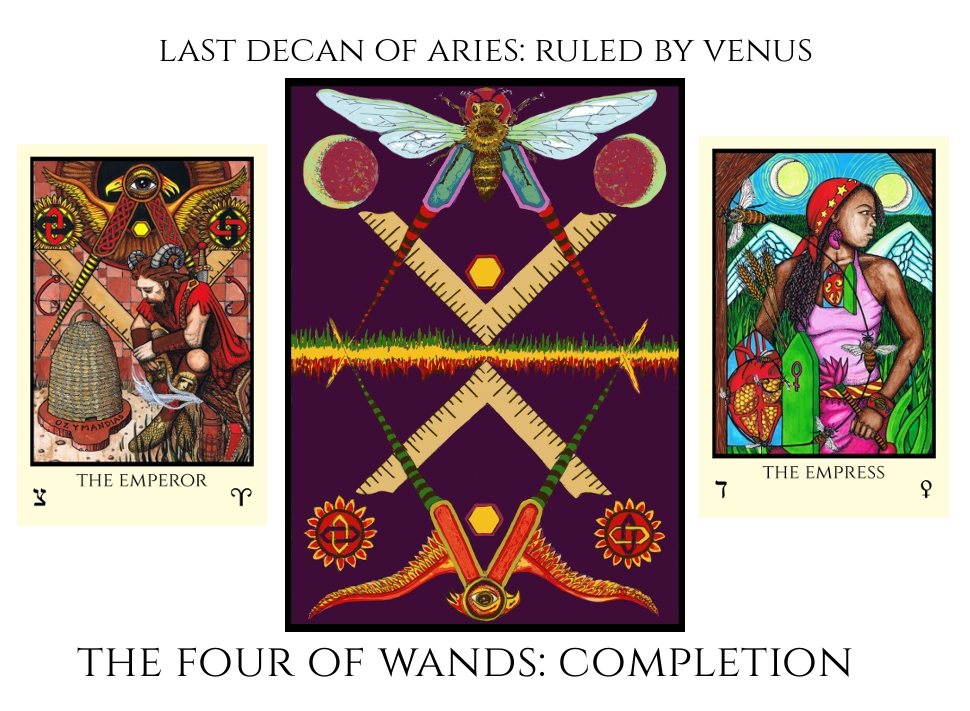
I think of this decan as ripe for acts of Love and Will, a combination of creativity (Venus) and action (Aries). More to follow in Part II as the decan progresses. I’ll try to post Part II around halfway through the decan this time; in the last decan it came more towards the end as it was a very busy one. The format I’d like to follow if possible for this decan walk is to introduce it in Part I, and update on how it is going or different things done during the decan in Part II, along with additional info, and activities related to the decan.
This is so you can come up with your own interpretations and ideas for the first half, and compare afterward part-way through.
The code DECANWALK2025 is still good through the end of this decan, for 15% off Telos Tarot of 777, at TarotCart.com.
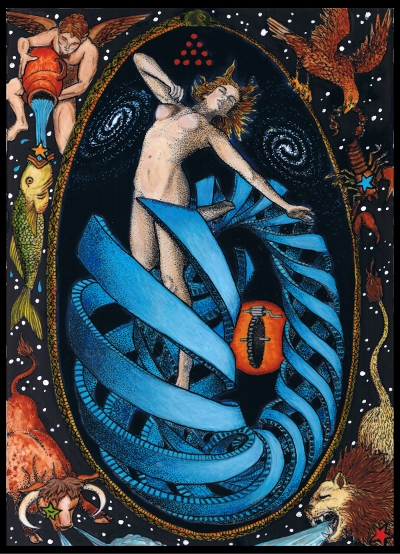
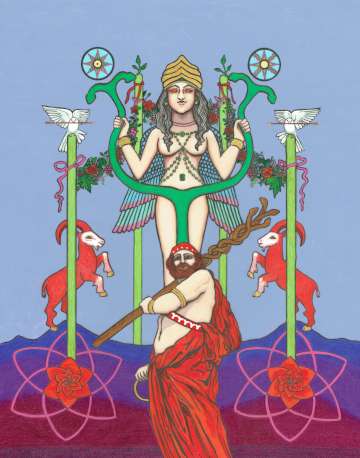
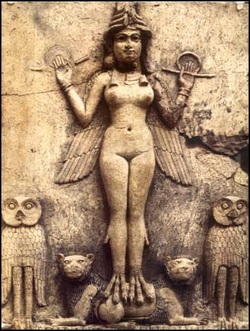
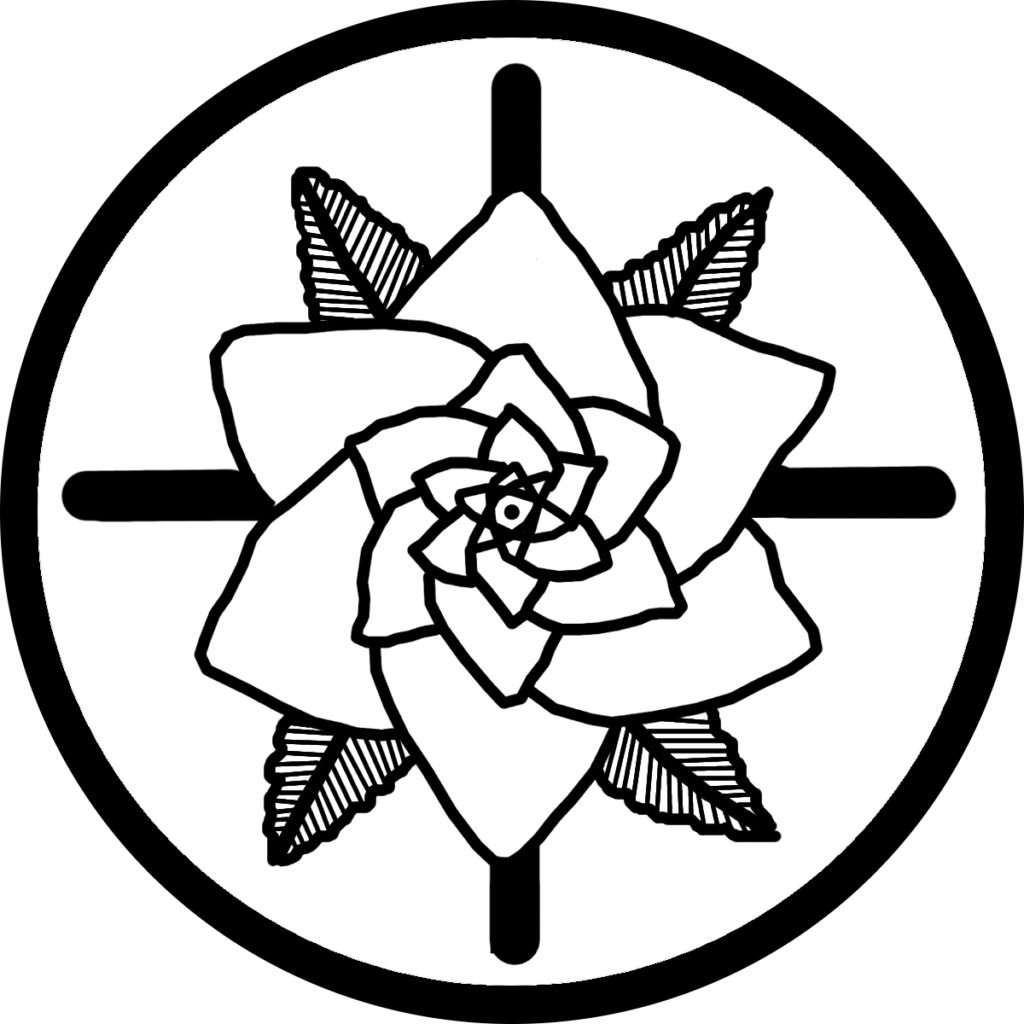
Thank you so much for these posts and this deck. I’m doing the decan walk for the first time, your input is invaluable!
Though I find it hard to see this man of gold has good intention I find it heartening that he shall fail.
Mel. Firstly, thank you for these offerings. Secondly: if appropos, could you expand on the concept of ‘the man who wishes to do good but cannot’ in part two? …seems quite important yet leaves me with questions (which I will ruminate).
Thanks once again.
Sure, I will think on it, and thank you for the suggestion!